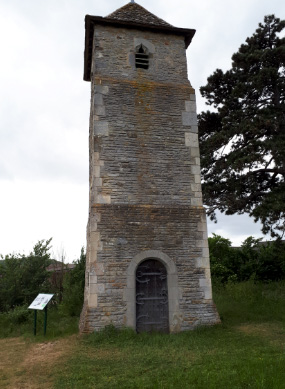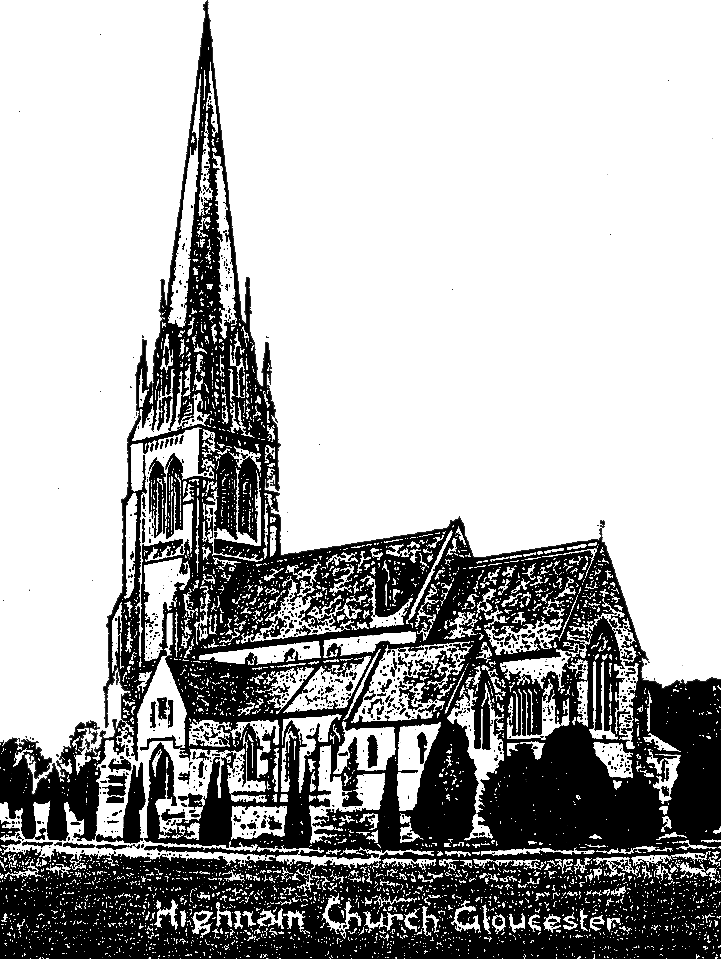History of Lassington Church
Part of Highnam BeneficeLassington Church
Lassington is about 2 miles NW of Gloucester and has been an integral part of the parish of Highnam since 1928, when the last Rector of Lassington died. In earlier days, not only did Lassington have its own Rector, but the church and land were owned not by the Bishop of Gloucester but by the Archbishop of York.
In Roman times a road passed through Lassington from near Over bridge, just west of Gloucester to Hereford, the original Lassington Lane. There was a small village sited on the right of the current Lassington Lane, which used the river Leadon for transport. The Saxons built the first church and also a moated rectory to serve the village. It is the remains of the Saxon tower which can be seen today. The church was dedicated to St Oswald, king of Northumbria and was closely linked with St Oswald’s Priory in Gloucester.
The Doomsday Survey of 1086 records that the Archbishop of York owned Lassington with Ulfkatel holding the manor of 2 hides, followed by Roger a few years later. In lordship there was 1 plough; 5 villagers and 3 smallholders with 3 ploughs. 3 slaves; 20 acres of meadow. A plough was as much land as a yoke of oxen could plough in one day. Bigland stated that there were about 500 acress.

In the 11th century the church fell into disrepair and the Norman nave, chancel and small side-chapel were built and re-dedicated on Palm Sunday 1095. There was a musician’s gallery so that instrumental music could lead the psalms and hymns. There is a record that this music was at one time provided by two fiddles, a clarinet and a double bass. The gallery remained until removed by Victorian “modernisers”.
In 1220, Walter of Muchegros, Lord of Lassington manor granted annually 2 cornocks of oats to the brethren of St Bartholomew’s Hospital in Westgate Street, Gloucester. This too would have gone up over the hill and down the old Lassington Lane to Gloucester.
After the Reformation the manor of Lassington was granted to William Ehorwood, attorney general to King Henry VIII, and for the first time the parish of Lassington was placed in the see of Gloucester. Highnam, which had no church but was part of the parish of Churcham, had been granted to John Arnold who later bought Lassington, although it remained a separate parish.
In 1607 there were 10 houses in Lassington and 71 in Highnam, but the number of houses in Highnam was reduced to 37 by a battle in 1643between the Roundheads and Cavaliers across Highnam. It was marginally safer in Lassington.
However, the rector wrote in the register: “The old register books belonging to the parish of Lassington were embezzled and lost in the late time of confusion. Divers unhappy wars”.
For a time it was fashionable to be married at Lassington church, mostly by licence. In 1670, when the number of inhabitants was small, there were weddings of a Glover, a Tailor, a Cook, a Gardener, a Butcher, a Feltmaker, a Weaver, a Pargetter and a Victualler.
In 1801 there were 85 persons living in 13 houses in Lassington and in 1871 there were 69 people living in 13 houses, but after that the number of houses and people declined. In 1809 the owner of Highnam Court demolished the chapel and the seats were removed to Lassington church. In 1875, the interior of the church was substantially rebuilt and the minstrel’s gallery removed.
This final rebuilding so changed the church that when the roof later required replacing it was not considered that the body of the church was worth saving. An earlier rector had petitioned the Bishop to have the original rectory taken down as he said it was “no better than a pauper’s cottage”. He then travelled out from Gloucester on horseback, but there were complaints from the parishioners about the infrequency of the services.

The new rectory was built in Lassington Lane in 1868, but in 1928 when Lassington was combined with Highnam, the rectory became a private house, so ending the annual feast for Lassington residents of salmon, roast beef, beer and cakes.
In 1851 the new church at Highnam was built and also the school. 11 children attended from Lassington. The fees of 4d a week for older children and 2d a week for younger children were met from a charity.
By 1962 Lassington church was in a bad state of repair, and the roof leaked badly. The final service, a harvest festival, was held with the rain coming through the roof. The only lighting was still oil lamps. The last marriage had been in 1947 and the last baptism in 1956.
In 1975 the body of the church was demolished, the altar was taken to Highnam Church and the tower was left in the care of The Churches Conservation Trust.
